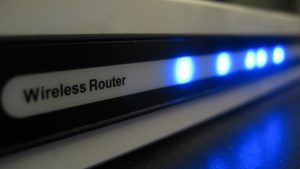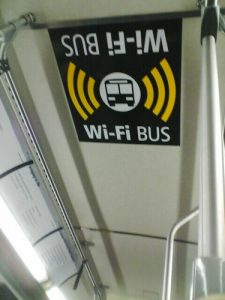TL;DR:
- Implementing strategies to teach and stay connected with limited technology infrastructure.
- Bridging the digital divide by working offline, and utilizing microlearning and paper options.

“New Router (May 14, 2010) [57/365]” by Brenderous is licensed under CC BY-NC-SA 2.0
The other issue with connectivity is some families cannot afford the internet at home. In a May blog post, The Bill and Melinda Gates Foundation reported that poorer households are less likely to have internet access to support their children’s distance learning (84 percent of households with income less than $25,000 vs. 96% for households with an income greater than $25,000).
Schools can provide hotspots and devices, but there are still connectivity issues that hotspots cannot fix.
While the digital divide is not the specific issue of a school district, administrators, coaches, and teachers must find, create, and adapt our teaching strategies to make sure each student receives equitable educational opportunities. We cannot wait on these government and municipalities to approve, fund, and install better internet infrastructure. Schools need to be creative and think outside the box to ensure all students receive an equitable education. We cannot wait for the technology infrastructure.
While the digital divide is not the specific issue of a school district, administrators, coaches, and teachers must find, create, and adapt our teaching strategies to make sure each student receives equitable educational opportunities. Click To TweetResponding to the Pandemic
In March, schools were scrambling and searching for ways to stay connected with their staff and students. Unfortunately, there were no easy solutions. But school districts stepped up to the challenges.
School districts across the nation opened their WiFi passwords and upgraded to allow for the installation of outdoor wireless access points. While this worked for some, it was difficult for working parents to drive and sit in a parking lot for a few hours with their child to do homework. It was unfeasible for most. In mid-April, the Governor of Illinois released a map of public WiFi hotspots throughout the state which gave students the ability to connect.
Others districts began thinking “out of the box” by deploying school buses with WiFi hotspots throughout their communities. By strategically placing buses throughout a district, students were able to get access at home, or parents would have a much shorter drive to a WiFi location.
Planning for 2020-2021
This year my role and district are different as I took a new job as a Curriculum Coach. As I prepare my teachers for fall, these are three things I’m considering, especially for our students who do not have an adequate internet connection.
Bridging the Digital Divide: Working Offline

“Free Wifi on Metro buses” by Captain Jack 63 is licensed under CC BY-NC-SA 2.0
Our district has devices for all students K-12. In a hybrid instructional model, where students only attend part-time, students will have the opportunity to get digital materials. Students can download videos or just make sure they are able to access their teacher’s Google Drive shared folder for their class. Our technology teacher created a Google Slide in which a teacher could put a PDF, place text boxes over the document, and have students add information. Check out the template. That helps most students to access any lessons that they may have missed or any resources that are essential for future lessons. Google Drive seemed to be a good way of delivering these resources to most children, however, the school is open to any other suggestions that might be more effective. Maybe the school should consider contacting an IT company to see if they have any solutions to this issue. By visiting a website like https://sphereit.uk/managed-it-services-london/, the school could potentially find a better way to reach their students digitally.
Bridging the Digital Divide: Microlearning
According to eLearning Industry, microlearning delivers short bursts of content for learners to study at their convenience. Content can take many forms—from text to full-blown interactive multimedia—but should always be short. The app Avist is designed solely for developing courses utilizing the concept of microlearning.
I’m currently experimenting using an app called Remind. The app allows the teacher to compose text messages that are sent directly to the students and parents. Remind’s privacy feature does not give out either party’s phone number. Plus, students are able to reply back via text message so the internet is not needed.
[scroll down to keep reading]
Bridging the Digital Divide: Paper Options
The school district I recently worked at not only had internet connectivity issues in the community, but didn’t have a one-to-one device program. In order to keep learning consistent, we could post our lessons to Google Classroom, but also had to make paper copies available for students without access.
With some students working digitally and some working with physical paper, it is difficult to maintain consistency with daily assignments. It is obvious the student with internet access will have an advantage over the student doing a paper assignment. As teachers, we must find ways to reduce this gap.
As we think of ways to prepare our teachers for multiple scenarios next year, we have to keep the digital divide in mind. What are some creative ways your district has bridged the divide?



